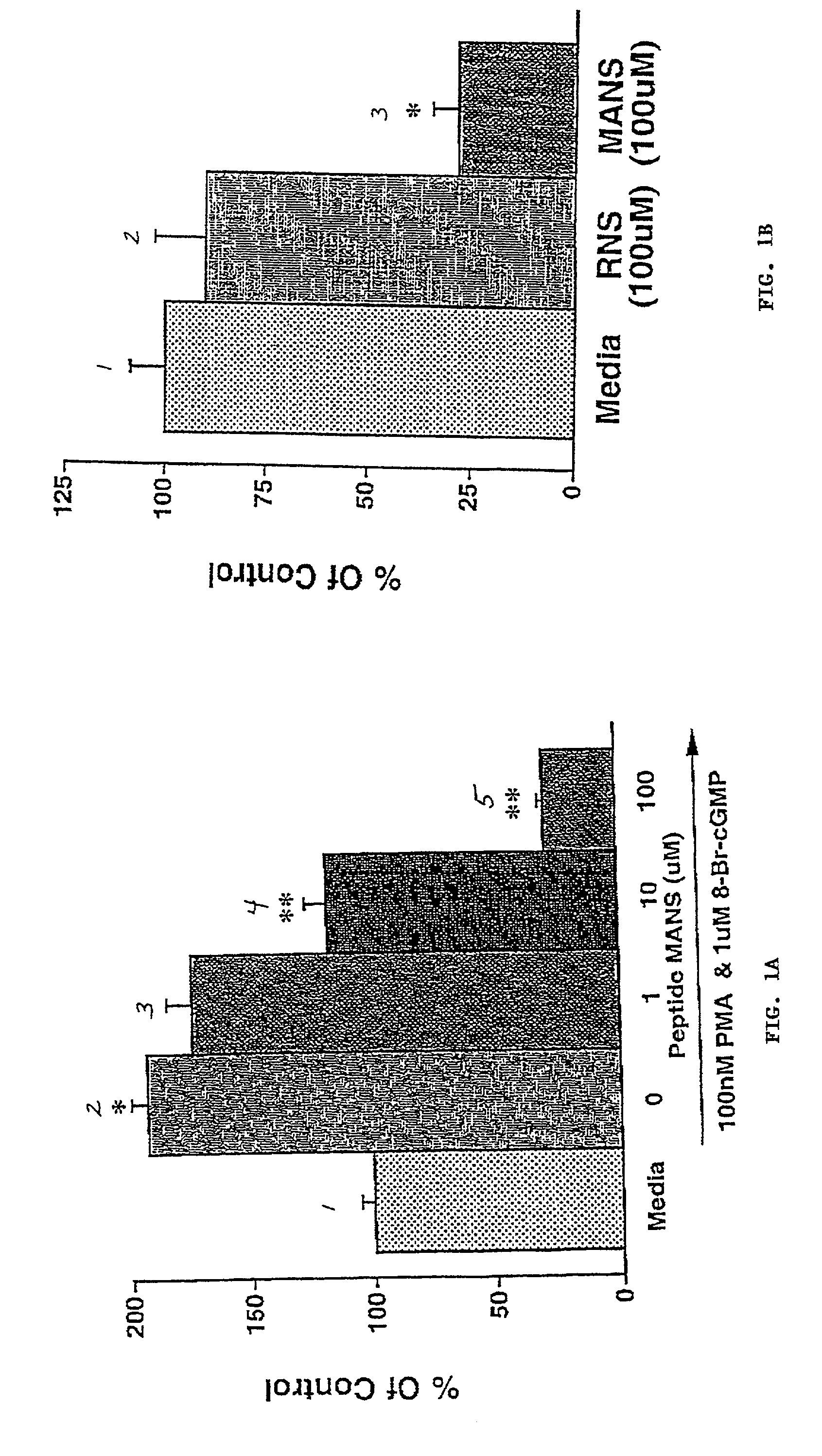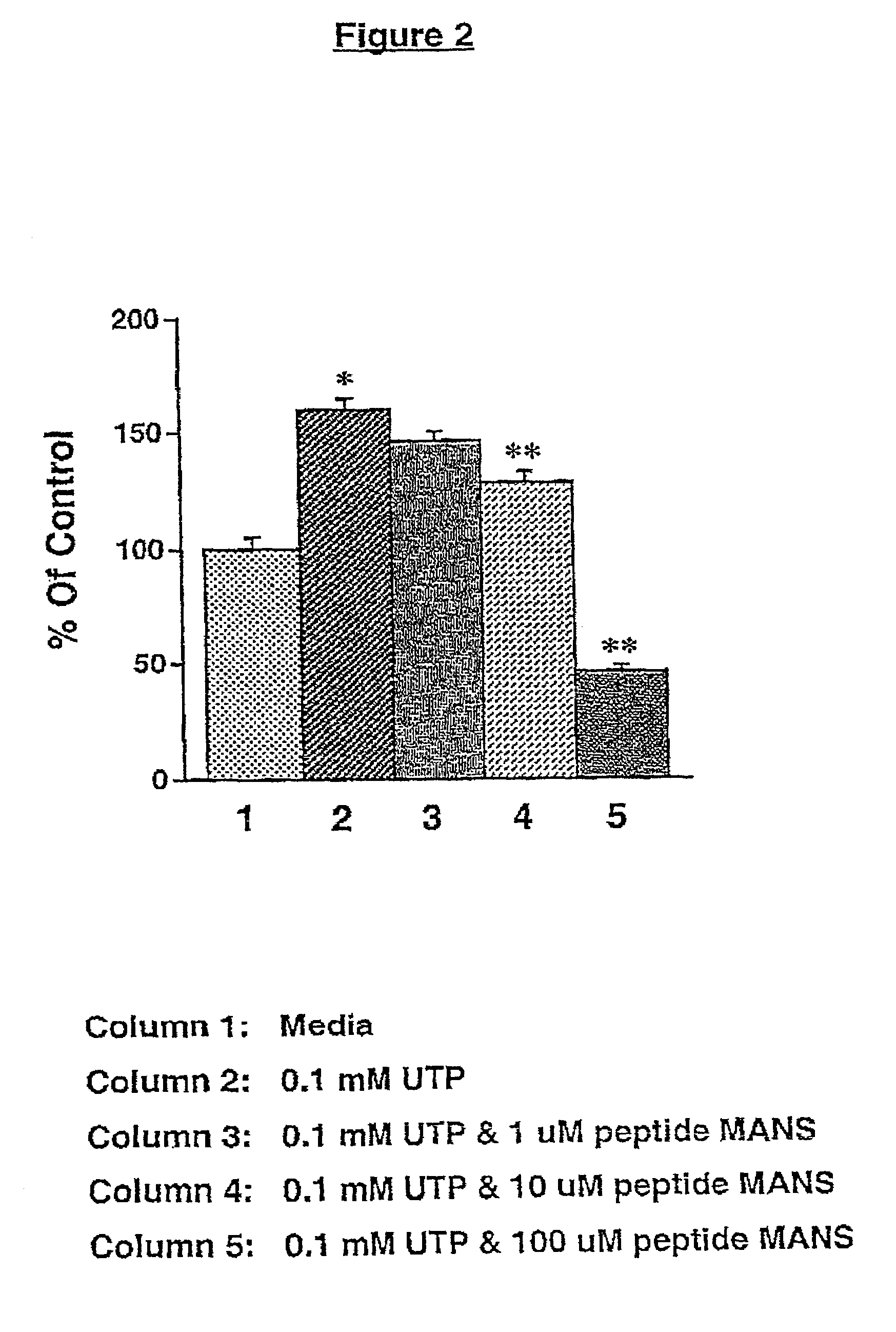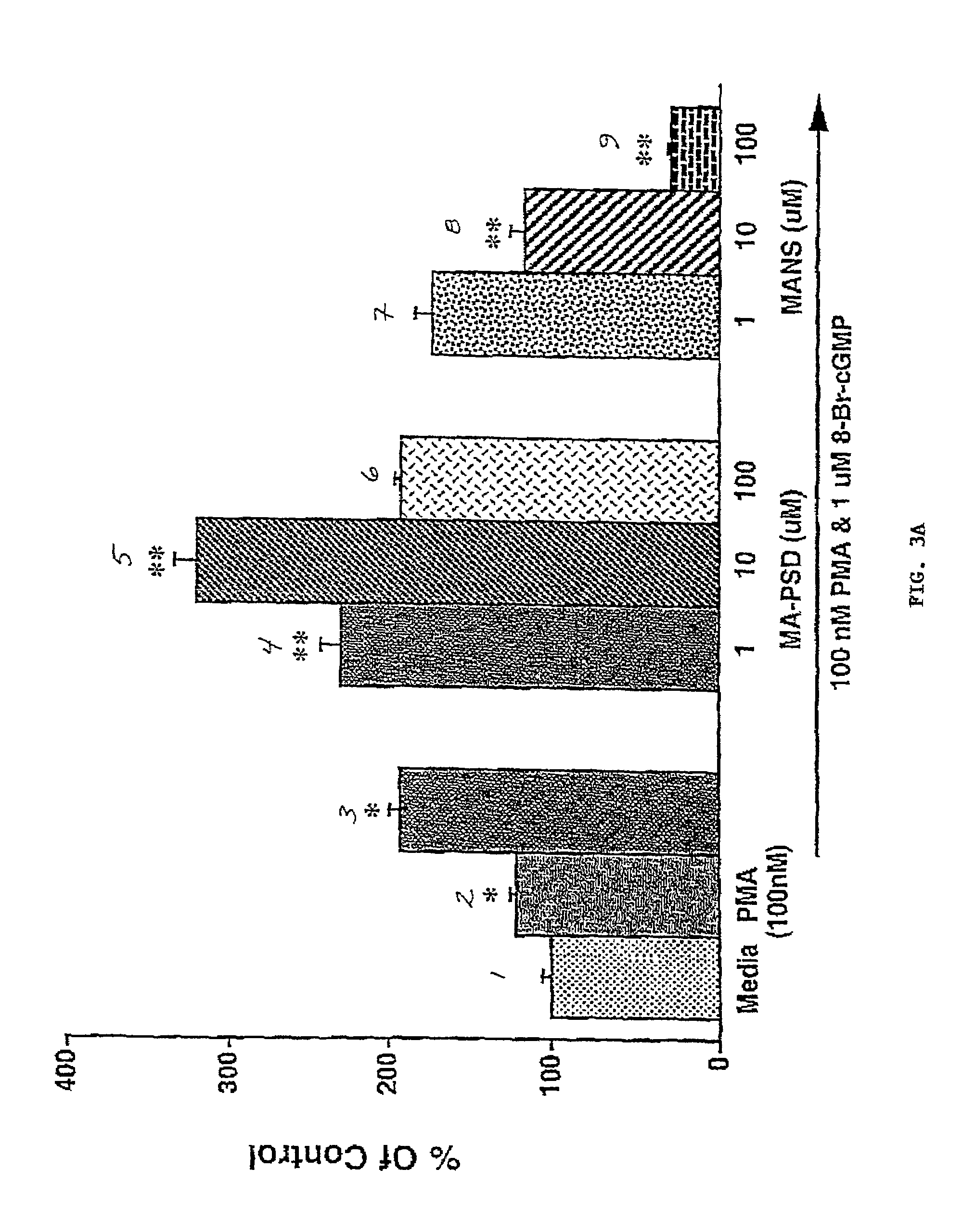Method and compositions for altering mucus secretion
a technology of mucus secretion and composition, applied in the field of methods and, can solve the problems of airflow obstruction, increased retention of inhaled particulate matter and microbial matter, and under-secretion of mucus also has harmful effects, and achieves the effect of increasing the secretion of mucus over the control level
- Summary
- Abstract
- Description
- Claims
- Application Information
AI Technical Summary
Benefits of technology
Problems solved by technology
Method used
Image
Examples
example 1
In Vitro Assessment of Mucus Secretion
[0123]Cell Culture System: Expansion and cryopreservation. Primary normal human bronchial epithelial (NHBE) cells (Clonetics, San Diego, Calif.) were seeded into vented T75 tissue culture flasks (500 cells / cm2) in bronchial epithelial basal medium (BEBM; Clonetics, San Diego, Calif.) containing 25 ng / ml human recombinant epidermal growth factor (EGF; Intergen, Purchase, N.Y.), 65 ng / ml bovine pituitary extract (prepared by the methods of Bertolero et al. Exp Cell Res 155:64, 1984), 5×10−8M all-trans retinoic acid, 1.5 μg / ml bovine serum albumin (Intergen, Purchase, N.Y.), 20 IU / ml nystatin (Gibco, Grand Island, N.Y.), 0.5 μg / ml hydrocortisone, 5 μg / ml insulin, 10 μg / ml transferrin, 0.5 μg / ml epinephrine, 6.5 ng / ml triiodothyronine, 50 μg / ml gentamicin, and 50 μg / ml amphotericin-B (Clonetics; San Diego, Calif.). Once confluent, cultures were dissociated with trypsin / EDTA and frozen as passage-2 according to the methods of Clonetics Corporation.
[0...
example 2
MARCKS mRNA in Human Bronchial Epithelial Cells
[0126]MARCKS messenger RNA was detected in human bronchial epithelial cells grown in air / liquid interface culture by Northern analysis (Ausubel et al., eds. “Current Protocols in Molecular Biology.” New York: John Wiley & Sons, 1992) using a human MARCKS cDNA (approximate length 1 kb) as a radiolabelled probe. MARCKS message increases as these cells become more differentiated when maintained in an air / liquid interface culture.
[0127]To detect MARCKS protein in these cells, cells were labeled with 3H-myristic acid (as MARCKS is myristoylated) for 16 hours in media. Cells were lysed, and MARCKS protein was immunoprecipitated according to the method of Spizz & Blackshear (J Biol Chem 271:553, 1996) using monoclonal antibody 2F12 (a gift from the Blackshear laboratory).
[0128]MARCKS within the airway epithelial cells was found to be phosphorylated by the PKC activator, PMA (100 nM), while 4α-PMA (a phorbol ester control which does not activat...
example 3
Blocking of Mucin Secretion by Peptide MANS
[0129]The effect on mucus secretion of a myristoylated peptide containing the first 24 amino acids of the human MARCKS protein (MANS; myristoylated N-terminal sequence; SEQ ID NO:1) was tested. Cultured normal human bronchial epithelial cells as described above were used. Test cells were co-incubated for 15 minutes in apical and basolateral media containing 1, 10 or 100 μM of MANS peptide, and then co-incubated for 15 minutes with the peptide and 100 nM PMA plus 1 μM 8-Br-cGMP (columns 3-5 of FIG. 1A). Control cells were not exposed to MANS peptide but were preincubated in media only (column 1 of FIG. 1A) or media containing PMA and 8-Br-cGMP (column 2 of FIG. 1A). Single asterisks (*) indicate that the response was statistically different than the media control (column 1), and double asterisks (**) indicate that the response was statistically different than that observed in stimulated cells that were not exposed to the MANS peptide (column...
PUM
| Property | Measurement | Unit |
|---|---|---|
| size | aaaaa | aaaaa |
| size | aaaaa | aaaaa |
| particle size | aaaaa | aaaaa |
Abstract
Description
Claims
Application Information
 Login to View More
Login to View More - R&D
- Intellectual Property
- Life Sciences
- Materials
- Tech Scout
- Unparalleled Data Quality
- Higher Quality Content
- 60% Fewer Hallucinations
Browse by: Latest US Patents, China's latest patents, Technical Efficacy Thesaurus, Application Domain, Technology Topic, Popular Technical Reports.
© 2025 PatSnap. All rights reserved.Legal|Privacy policy|Modern Slavery Act Transparency Statement|Sitemap|About US| Contact US: help@patsnap.com



